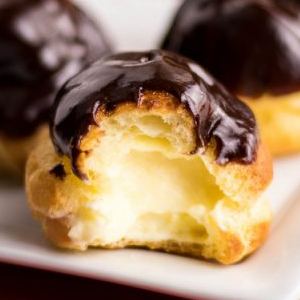Yesterday, we took a quick look at some of the most underrated French traditional dishes and some of the out-there menu items you may have heard of but not actually tried. Today, we’ll shift gears and survey some of the multitudinous French desserts…
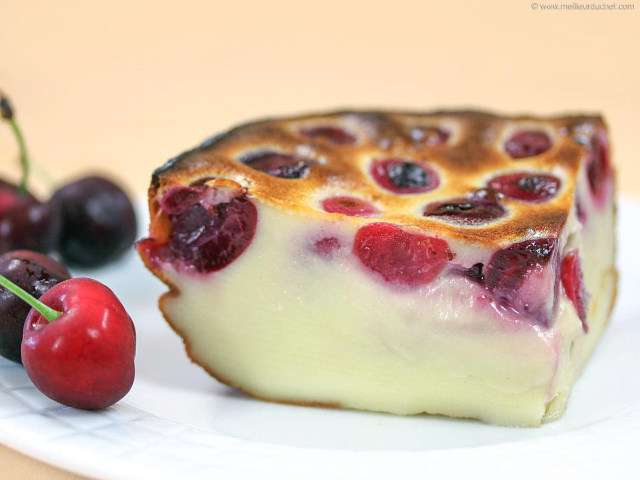 Classic Clafoutis: A custard pie studded with fresh fruit…
Classic Clafoutis: A custard pie studded with fresh fruit…
We’ve looked at other cuisines which betray a humongous sweet tooth in the cultures that own them. But none other can match the love of the French for sugary desserts and treats. Today we’ll cap off our Expedition To France by looking at some of the more famous (and infamous) French Desserts and treats.
On our menu today
Crème Brulé: A small round mould of very sweet, golden vanilla custard is topped with rich, dark caramel. Simple, elegant and classic.
Tarte Tatin: This is a tarte – or pie – baked upside down in a frying pan and flipped out onto a serving platter so that the crust is on the bottom. You can use puff pastry (which you can get frozen from the supermarket) or make your own short pie crust. The short Crust is preferred, because it doesn’t get soggy as easily.
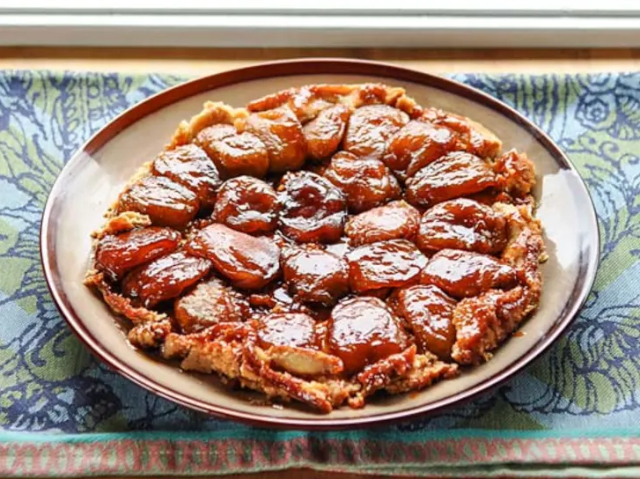
Cook thick apple slices in caramel (butter and sugar) until softened and slightly browned. Arrange the apple slices in a nice pattern in the bottom of the pan. Then… Top with a fairly thick crust. Poke the crust all over with a fork to ventilate (to allow the steam to escape while baking without literally blowing the lid off the thing!) Bake until the crust is a crispy golden brown (20-25 min.). Turn out carefully onto a large dinner plate or serving platter. Now apple-side -up it will look amazing and smell even better!
Galette: Galettes are like pies without the pan. You just lay our a flat round piece of dough, pile on any fruit you like in the middle, and fold up the edges just enough to keep the filling from running out. Galette pastry differs from regular pie crust in that it contains a little corn meal to give it extra crispiness and strength. For the filling, toss thinly-sliced fruit (eg.- peaches or pears) in a mixture of sugar and flour to cat thoroughly. This will create a nice sticky glaze. You can use any fruit you like; strawberries are a favourite. Bake on a parchment paper-lined cookie sheet or sheet pan at 375 F for about half an hour, until the fruit is bubbling and the crust is golden brown. Allow to cool completely before attempting to slice.
Madelines: Now you know what those odd shallow, shell-shaped mould pans are that you probably got at a wedding shower and never used… Madelines are sweet little scallop shell-shaped cookies – a traditional favourite on special occasions. They are classic butter cookies flavoured with light essences such as lemon, rose, vanilla, or lavender.
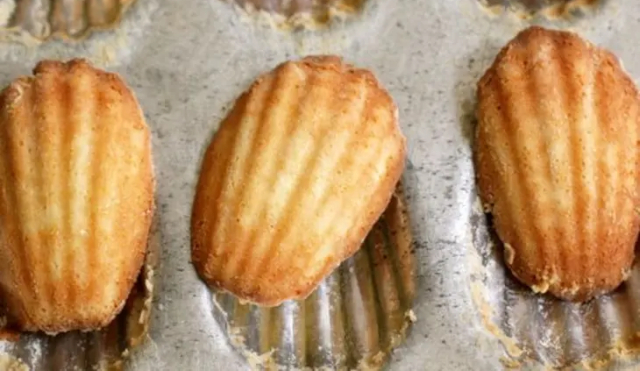
Chocolate is also popular these days. Lemon is traditional. Although they seem simple and elegant, there are some important rules to follow to ensure that your madelines come out perfect. DOn’t just setytle for the cookies naked on a plate; they will be even more fetching to your guests covered in a thin glaze flavoured to match the cookies themselves.
Éclaires and Puffs: Puff, or Choux Pastry is the basis of hundreds of deserts in the French culinary pantheon(see photo, top of page). Pâte à Choux sounds simple. It’s made from four butter and eggs. But, like the Madelines above, you must observe certain rules to ensure a fabulous result. The dough is piped out onto a parchment paper-lined cookie or sheet pan in the shape and size you prefer. You can make éclaires, round puffs or any shape you wish. Just be sure they’re suitable for filling with pastry cream or whipped cream after they’re baked. When properly baked, the pastry shells will be feather light and golden brown on the outside, and hollow (more or less) on the inside. Use a piping bag with a small or medium tip for filling. Top them with an icing complementary to the filling.
Sabayon: This is the French version of Italian Zabaglione (and you can guess how it got to France from there!) Here’s an easy one everyone will love. They’ll think you lavished hours of attention on it! As for the appropriate occasion to serve it; one culinary school chef I studied under suggested it was just the thing ‘to make the panties drop’… Naughty chef!
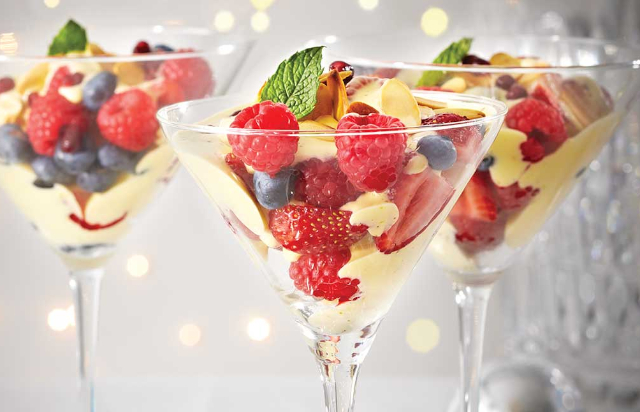
Anyway, you simply separate one egg for each portiuon you want to create. Place the yolks in a double boiler (Bain Marie; a steel mixing bowl over a deep pan full of boiling water) and whisk them with half an eggshell (one teaspoon of sugar) for each portion until creamy. Then add a flavouring . Chocolate is nice, when entertaining family groups. But my naughty chef suggested a teaspoon per portion of Baily’s Irish Creme, Triple Sec or whatever liqueur you prefer. Brandy or Sherry is classic. Pour into parfait glasses or brandy snifters and top with a fruit or other garnish suggestive of the flavour. Whipped cream may also be used, but it’s not traditional.
Clafoutis: What happens when you make a cake like a pie? You get a flat cake. But this one is great! It actually comes out like a stiff custard – not unlike a Bread Pudding, but without the bread. In one large bowl… Whisk up eggs, milk, sugar and flour. And vanilla, of course. Pour the mixture into a skillet (well-seasoned, generously buttered cast iron is traditional) and stud with the fruit of your choice. Stone fruits (like peaches) and soft fruits (like strawberries and raspberries) work well. Avoid watery fruits like grapes. Bake at 375 F for 45 to 60 minutes until the custard is set (test with a toothpick in the centre) and golden brown on top. Allow to cool completely bnefore cutting into wedges or squares (depending on the shape of pan you use). Serve as is or topped with crème frâche or whipped cream.
Babas au Rhum: Rum Babas are truly a classic French treat. A feature that sets this recipe aside from almost all others: You use both yeast and baking powder. So, you end up with a cross between bread (which holds together well) and cake (which has a nice, fine crumb).
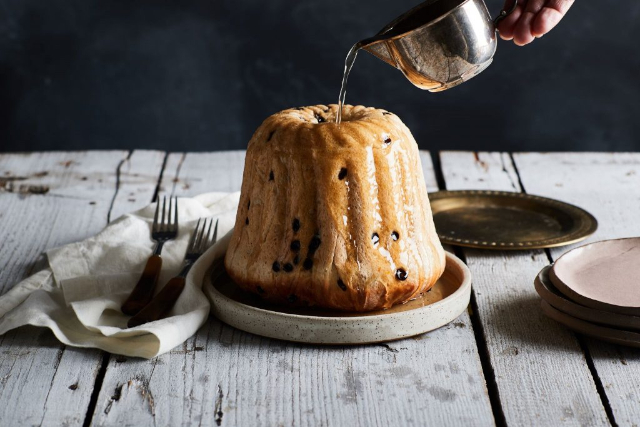
You first whisk together flour, sugar, egg yolks, baking powder and milk. Then carefully fold in the egg whites, which have been whisked or whipped in an electric mixer to the stiff-peaks stage. Fill generously buttered Baba moulds about half full and bake at 350 F for 20-25 min, until they pass the toothpick test. Use a syringe to infuse the cakes with a special syrup liberally dosed with Rum (see linked recipe) that will make them moist but not soggy. Top with whipped cream. Once again, the linked recipe offers special instructions you should be aware of, if you want to produce truly amazing Babas.
Crèpes: These are thin pancakes you’ve probably all had at one time or another, in one application or another. Where they use Pita bread in the the Eastern Mediterranean, and Tortillas in Central America and Mexico to hold wraps together, they use Crèpes in France. Without going into to much detail, Crèpes are very thin pancakes made from a very thin flour-based batter heavy on the eggs and milk. They also contain melted butter and are traditionally fried in butter. Rich, rich, rich! With all those eggs, mot recipes recommend a non-stick pan. They also mention that you can use a whisk to mix the batter, but recommend a blender. This recipe includes some valuable hints and techniques to ensure you achieve a perfect result. You can use crèpes in a wide variety of ways, from breakfast to midnight snack. Google yourself crazy!
Et voilà, encore, encore!
And that’s the third and final installment of our Expedition to France journal… As with the other categories we explored, the above dishes represent just a very small selection of the most well-known and most unique French desserts. Remember: we’ve only just dipped our taste buds into the surface French cuisine. You could spend a lifetime really getting to know it, and prepare it expertly. Like Julia Child did…
~ Maggie J.

